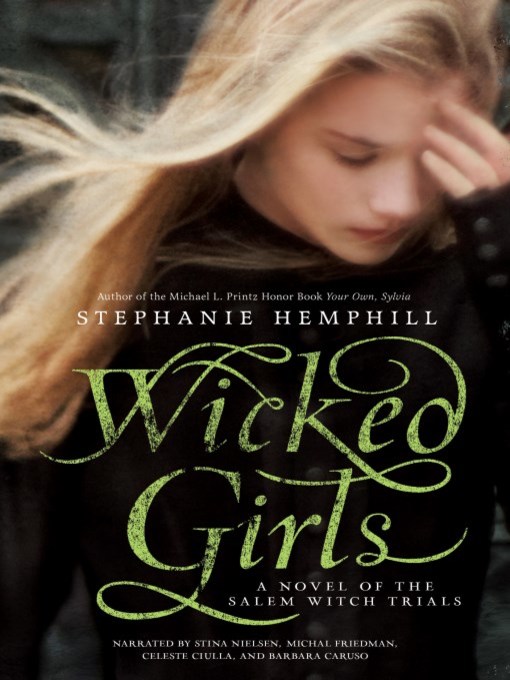
With our current legal system and expectations in society, it’s difficult to look back and understand what happened in Salem. The adults who continue to coddle them appear to be living vicariously through them, encouraging them to act outrageously and directing the girls’ accusations to those who have wronged them in the past.Īlthough fictional, the stories of these girls present a plausible explanation of the actual historical events in Salem Village. This being said, the girls are not alone in their hysteria. The girls do appear to be acting out with a motive for attention, rather than an actual fear of witches. We see Mercy delighting in the looks she gets from the townspeople because of her “vision.” We see Margaret become jealous and desperate to keep the love of her betrothed, Isaac. We see Ann craving attention from her mother and controlling the other girls. Told in short verses, Wicked Girls jumps from girl to girl for a variety of perspectives.

She begins to dictate what the girls will say when they “see” witches, how the girls must act when they are “afflicted”, and even who they begin to accuse of witchcraft.

Because several of the girls come from well-respected households and are considered “ladies” in their society, their claims are taken seriously by the church, the town, and eventually in court.Īt the young age of 12, Ann is the ringleader of the group. The girls begin to “see” witches and complain of being tormented, pinched, and suffocated. They range in age from 8 to 17 years old, yet they are all looking for new games to play, new things to learn, and interesting ways to pass the time. Ann and Margaret are cousins, Mercy is a servant in Ann’s household, and Betty is the Reverend’s daughter.

Ann, Mercy, Margaret, Abigail, Betty, Elizabeth, and Susannah, all have interesting relationships. The girls in Salem Village are often treated with disregard, if paid any attention at all. Were they really tortured by unseen witches and saving the town from the devil? Or were they merely unhappy teenage girls thriving on attention? In Wicked Girls: A Novel of the Salem Witch Trials, Stephanie Hemphill presents a fictionalized account of the events in Salem from the perspective of the young girls who accused so many. The girls appeared to be equipped with a special gift for identifying witches, but what were these teenagers really like?

In 1692, a group of young girls accused several men and women in Salem Village, Mass., of being witches. Many of us are familiar with the story of the Salem Witch Trials.


 0 kommentar(er)
0 kommentar(er)
